This article was medically reviewed by Luba Lee, FNP-BC, MS. Luba Lee, FNP-BC is a Board-Certified Family Nurse Practitioner (FNP) and educator in Tennessee with over a decade of clinical experience. Luba has certifications in Pediatric Advanced Life Support (PALS), Emergency Medicine, Advanced Cardiac Life Support (ACLS), Team Building, and Critical Care Nursing. She received her Master of Science in Nursing (MSN) from the University of Tennessee in 2006.
There are 8 references cited in this article, which can be found at the bottom of the page.
wikiHow marks an article as reader-approved once it receives enough positive feedback. In this case, several readers have written to tell us that this article was helpful to them, earning it our reader-approved status.
This article has been viewed 249,070 times.
Shin splints are a common sports injury that occur when athletes overexert themselves, especially during running exercises. Pain from shin splints is located along the tibia, and can be caused by either swollen muscles or stress fractures. Depending on the severity of the injury, shin splints can cause a few days' discomfort or be debilitating for months. Read on for information on treating and preventing shin splints.
Steps
Immediate Relief for Shin Splints
-
1Take a rest. Since shin splints are almost always caused by exercising too much, the first thing to do is ramp down your workout routine to something you can accomplish without pain. Resting allows the swollen muscles along your shin bone to heal.
- Avoid sprinting, running, or walking too quickly while recovering from shin splints.
- If you still want to exercise during your recovery period, cross-train with low-impact exercises like biking or swimming.
-
2Ice your shins. Shin splints are most commonly caused by inflamed muscles, and icing them will ease the pain and reduce inflammation.
- Fill a food storage bag with ice, seal it, and wrap it in a thin towel. Apply it to your shins in 20-minute intervals.
- Don't apply ice directly to your body, since you could damage your skin.
Advertisement -
3Take non-steroidal anti-inflammatory drugs (NSAIDs). Drugs containing ibuprofen, naproxen or aspirin help reduce inflammation and relieve pain.
- Make sure you take only the recommended dosage, since NSAIDs can lead to an increased risk of bleeding and ulcers.[1]
- Don't medicate with NSAIDs as a way to kill the pain to allow you to exercise as usual; that's treating the symptom, not the problem, and you'll only make your shin splints worse.
-
4Go to the doctor. If your shin splints are making it difficult to get up and walk without pain, you should seek medical care. You may have fractures in your bones that are causing your legs to hurt. In rare cases, surgery is required to treat stress fractures and other causes of shin splints.[2]
Physical Therapy for Shin Splints
-
1Stretch in the morning. Keep your muscles limber by stretching them before you go about your day. Try these stretches to help your shin splints heal more quickly:
- Do a stair stretch. Stand on a step or a stair so that your toes hang over the edge. Point your toes downward, then stretch them toward the ceiling. Repeat 20 times, rest for a few seconds, then repeat 20 more times.
- Stretch by kneeling. Kneel with the tops of your feet flat against the floor, then slowly sit back onto your feet. You should feel your shin muscles stretching.
- Stretch your Achilles tendon if you feel pain on the inside of the shin, which is most common. If you feel pain on the outside of the leg, stretch your calf muscle.
-
2Strengthen the shin muscles. Doing these exercises a few times a day instead of running will help heal your muscles in no time.
- Trace shapes or the alphabet on the floor with your toes, while in a sitting position.
- Walk on your heels for 30 seconds at a time and then switch to regular walking for another 30 seconds. Repeat 3 or 4 times.
-
3Use massage to soothe your muscles and increase blood flow. To massage your muscles, apply oil to your shins. Then use your fingers to rub the oil into your muscles. Move your hands up toward your heart, which is the direction your blood flows. Continue to massage your muscles for 5-10 minutes.[3]
- Don't rub down your legs opposite blood flow, as it can damage your veins.
- Avoid rubbing your bone or ligaments directly, which can increase your pain.
-
4Relax your muscles with a foam roller. You can release built up tension in your muscles and increase blood flow by rolling a foam roller under them. Place the foam roller on the floor, then kneel on top of it. Gently roll yourself back and forth on the foam roller, massaging your shins between your knees and ankles.[4]
- You can get a foam roller at a sporting goods store or online.
-
5Return to running slowly. Increase your mileage by no more than 10 percent each week. If you feel the shin splints coming back, cut back on running until the pain goes away.
Preventative Strategies
-
1Warm up before exercising. Make a habit of warming up before running, sprinting, or playing sports like soccer and basketball that require a lot of heaving footwork.
- Do a light one-mile jog before going on longer runs.[5]
- Walk briskly for a block or two before you break into a run.
-
2Use good form when running. Poor form can increase your risk of developing shin splints. As you run, don't strike your feet on the heel or toe. Instead, land on the center part of your foot. Additionally, slowly increase your speed and distance so that you don't push yourself too hard or compromise your form.[6]
- Ask someone to watch or film you run for 5-10 minutes so you can easily check your form.
-
3Work out on soft surfaces. Shin splints can be caused by running on pavement or concrete surfaces, since the shin bears the brunt of the impact.
- Try running on dirt paths or grass instead of the road or the sidewalk.
- If you must run on the road, mix up your routine with biking, swimming and other cross training exercises so you aren't pounding the pavement every day.
-
4Replace your running shoes. If your shoes are worn out, new shoes with more cushioning can help disperse stress on the shin. If you have an overpronation or over supination, buy shoes designed to help with this problem.
-
5Try orthotics. If you're prone to getting shin splints, you may want to ask your doctor to fit your feet with orthotics or arch supports. These are special shoe inserts that will change the way you strike the ground with your feet and prevent your legs from getting overstrained.[7]
-
6
-
7Avoid overtraining. Slowly increase your speed and distance, giving yourself plenty of time to adjust. Additionally, give yourself time to rest and recover between workouts. If you start to feel pain or discomfort, slow down or take a break.[9]
- Listen to your body and don't push it farther than it's ready to go.
Expert Q&A
-
QuestionI think I may be developing shin splints. I wore heels for about 10 hours, and my shins became sore. They don't hurt when exercising though. Is it shin splits?
 Luba Lee, FNP-BC, MSLuba Lee, FNP-BC is a Board-Certified Family Nurse Practitioner (FNP) and educator in Tennessee with over a decade of clinical experience. Luba has certifications in Pediatric Advanced Life Support (PALS), Emergency Medicine, Advanced Cardiac Life Support (ACLS), Team Building, and Critical Care Nursing. She received her Master of Science in Nursing (MSN) from the University of Tennessee in 2006.
Luba Lee, FNP-BC, MSLuba Lee, FNP-BC is a Board-Certified Family Nurse Practitioner (FNP) and educator in Tennessee with over a decade of clinical experience. Luba has certifications in Pediatric Advanced Life Support (PALS), Emergency Medicine, Advanced Cardiac Life Support (ACLS), Team Building, and Critical Care Nursing. She received her Master of Science in Nursing (MSN) from the University of Tennessee in 2006.
Board-Certified Family Nurse Practitioner It's not clear based on this information alone whether or not it could be shin splints.
It's not clear based on this information alone whether or not it could be shin splints. -
QuestionI run 2 miles every morning. Today I decided to push harder and run 5 and ended up developing shin splints. Which of these options is the fastest way to recover and are there any other ways?
 Luba Lee, FNP-BC, MSLuba Lee, FNP-BC is a Board-Certified Family Nurse Practitioner (FNP) and educator in Tennessee with over a decade of clinical experience. Luba has certifications in Pediatric Advanced Life Support (PALS), Emergency Medicine, Advanced Cardiac Life Support (ACLS), Team Building, and Critical Care Nursing. She received her Master of Science in Nursing (MSN) from the University of Tennessee in 2006.
Luba Lee, FNP-BC, MSLuba Lee, FNP-BC is a Board-Certified Family Nurse Practitioner (FNP) and educator in Tennessee with over a decade of clinical experience. Luba has certifications in Pediatric Advanced Life Support (PALS), Emergency Medicine, Advanced Cardiac Life Support (ACLS), Team Building, and Critical Care Nursing. She received her Master of Science in Nursing (MSN) from the University of Tennessee in 2006.
Board-Certified Family Nurse Practitioner Get plenty of rest and ice your shins. Take 400 mg of ibuprofen up to twice a day for 1-3 days to help with the pain and inflammation, unless you cannot take NSAIDs. Drink lots of fluids to keep yourself hydrated, and choose anti-inflammatory foods. Avoid drinking. Finally, get at least 7-9 hours of sleep each night.
Get plenty of rest and ice your shins. Take 400 mg of ibuprofen up to twice a day for 1-3 days to help with the pain and inflammation, unless you cannot take NSAIDs. Drink lots of fluids to keep yourself hydrated, and choose anti-inflammatory foods. Avoid drinking. Finally, get at least 7-9 hours of sleep each night. -
QuestionI am currently having shin splints. Two weeks have gone by, but still the pain is there. I'm taking painkillers daily. Should I do icing?
 Luba Lee, FNP-BC, MSLuba Lee, FNP-BC is a Board-Certified Family Nurse Practitioner (FNP) and educator in Tennessee with over a decade of clinical experience. Luba has certifications in Pediatric Advanced Life Support (PALS), Emergency Medicine, Advanced Cardiac Life Support (ACLS), Team Building, and Critical Care Nursing. She received her Master of Science in Nursing (MSN) from the University of Tennessee in 2006.
Luba Lee, FNP-BC, MSLuba Lee, FNP-BC is a Board-Certified Family Nurse Practitioner (FNP) and educator in Tennessee with over a decade of clinical experience. Luba has certifications in Pediatric Advanced Life Support (PALS), Emergency Medicine, Advanced Cardiac Life Support (ACLS), Team Building, and Critical Care Nursing. She received her Master of Science in Nursing (MSN) from the University of Tennessee in 2006.
Board-Certified Family Nurse Practitioner You need to stop taking painkillers, as you shouldn't take them for longer than a few days. Rest and ice your shins for a few days to help improve your shin splints. Until your shins stop hurting, stick to low impact exercise like swimming. If your pain persists, see your doctor or a physical therapist.
You need to stop taking painkillers, as you shouldn't take them for longer than a few days. Rest and ice your shins for a few days to help improve your shin splints. Until your shins stop hurting, stick to low impact exercise like swimming. If your pain persists, see your doctor or a physical therapist.
Warnings
- Don't always run laps the same direction or on the same side of the road. Switch direction or sides, so one leg doesn't have more stress than the other.⧼thumbs_response⧽
- Avoid running on hills, especially downhill, and prolonged running on hard surfaces until you feel the shin splints are completely healed. Then, gradually add hills in to your runs.⧼thumbs_response⧽
References
- ↑ http://www.webmd.com/fitness-exercise/shin-splints
- ↑ http://www.webmd.com/fitness-exercise/shin-splints
- ↑ https://www.sportsinjuryclinic.net/sport-injuries/lower-leg/shin-pain/shin-splints/shin-splints-massage
- ↑ https://www.health.com/fitness/foam-roller-shins
- ↑ http://www.webmd.com/fitness-exercise/shin-splints?page=2
- ↑ https://www.verywellfit.com/how-to-prevent-shin-splints-2911057
- ↑ https://runnersconnect.net/the-ultimate-guide-to-shin-splints-for-runners/
- ↑ https://www.mensjournal.com/health-fitness/9-ways-cure-and-prevent-shin-splints/
- ↑ https://www.verywellfit.com/how-to-prevent-shin-splints-2911057
About This Article
Since shin splints are mostly caused by exercising too much, the best way to treat yours is to get some rest. Instead of doing your normal exercises, stretch and help heal your shin muscles by tracing the alphabet on the floor with your toes while you’re sitting down. If you still want to work out, definitely avoid running so your swollen muscles can heal, and instead go for low-impact exercises like swimming instead. During your recovery, ice your shins in 20-minute intervals to reduce the inflammation and ease any discomfort. You can also take anti-inflammatory drugs like ibuprofen or aspirin to relieve your pain. If you can’t get up and walk around because your shin splints hurt so badly, then you should go the doctor for treatment. For more help from our Medical co-author, including how to use a foam roller to massage your muscles and treat your shin splints, keep reading!
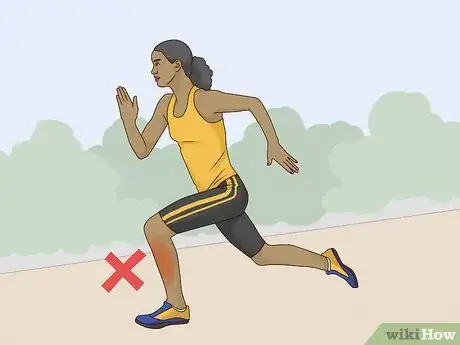
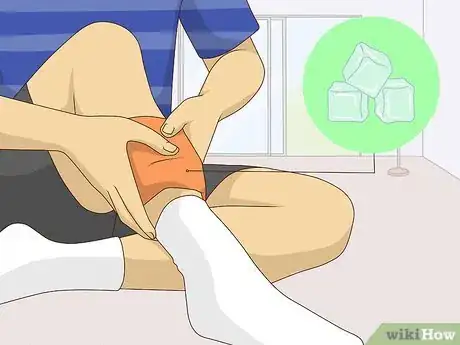
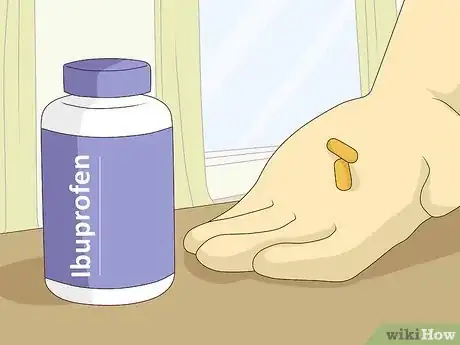
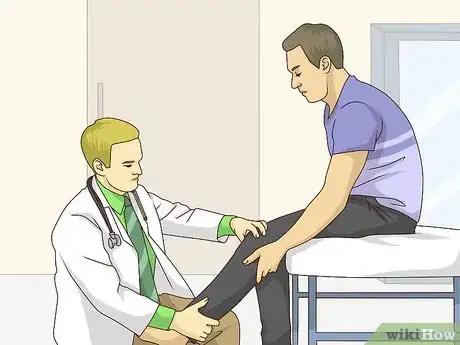

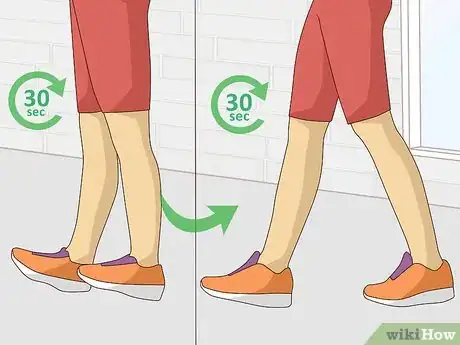
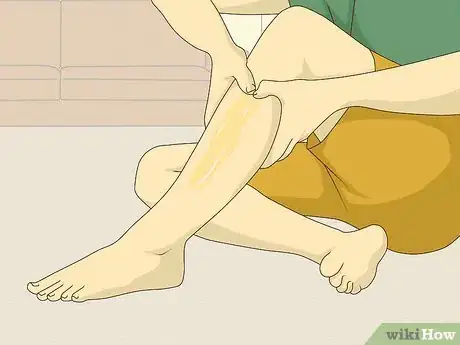
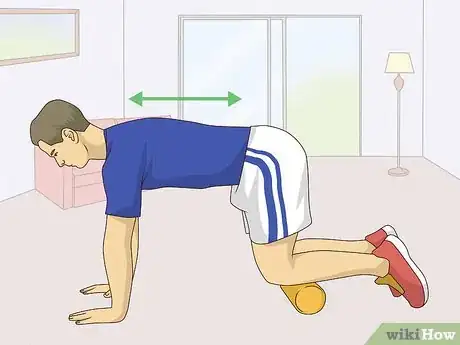
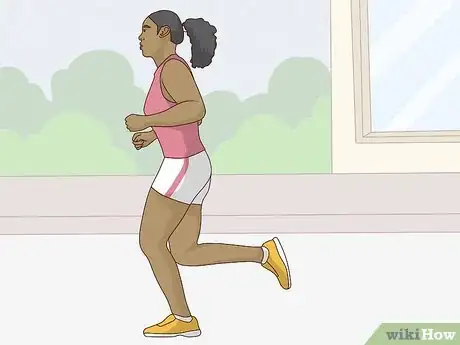
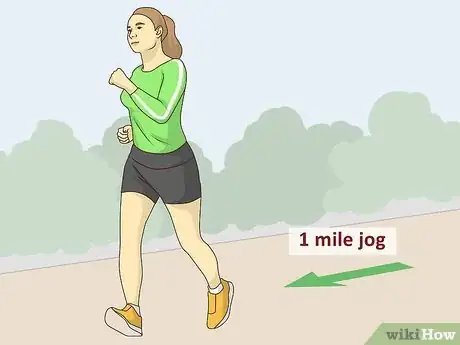
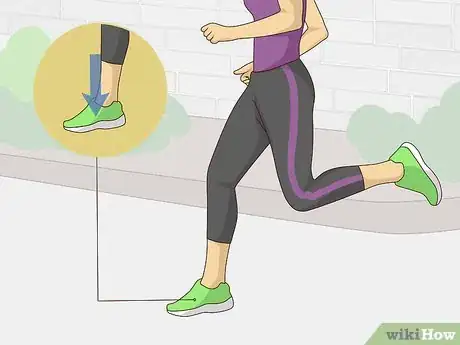
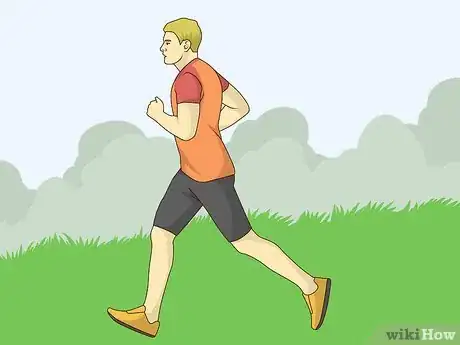
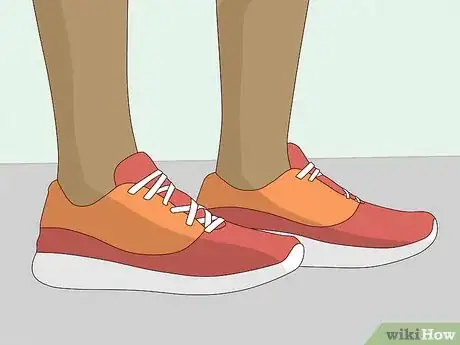
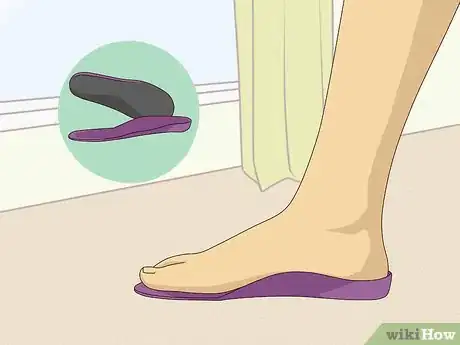
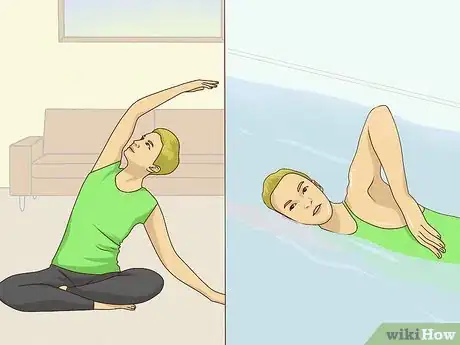

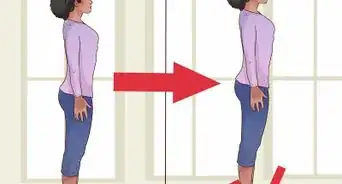
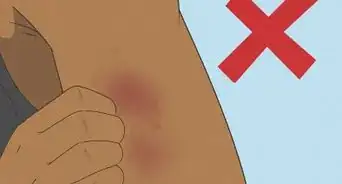
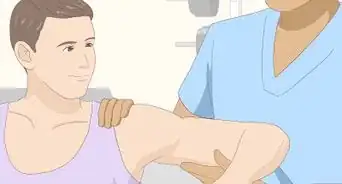



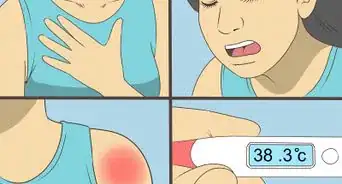
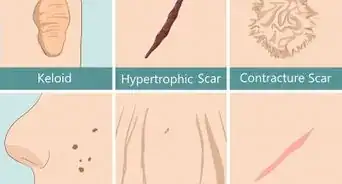


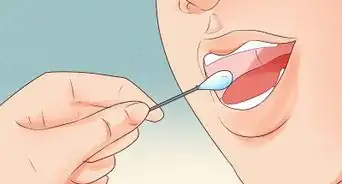











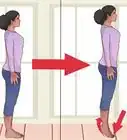
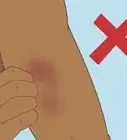
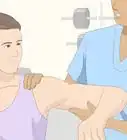
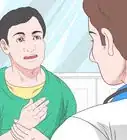



































Medical Disclaimer
The content of this article is not intended to be a substitute for professional medical advice, examination, diagnosis, or treatment. You should always contact your doctor or other qualified healthcare professional before starting, changing, or stopping any kind of health treatment.
Read More...